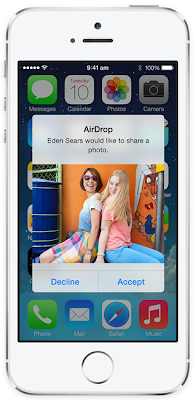In my opinion, having one of these routers in your home is pretty much, if not definitely a necessary requirement. They make things oh-so-easy, and in true Apple style, clean, easy to use and wildly efficient.

Part of my job is to provide advice or make recommendations to my clients on new hardware or software to purchase when faced with a problem that needs resolving, and usually needs resolving fast and permanent. I don't believe in a bandaid fix in my work, as it usually results in repeat work, and generally an unhappy customer.
Today I had a customer who was in dire need of a new internal network for his office. His modem/router/gateway device, whilst performing efficiently for at least the modem component is very dated and aged, and was starting to have DHCP and routing issues, as well as the wireless signal kept dropping out and was weak rendering it basically unusable. However, having had some experience with the AirPort line of products, I recommended he invest $119 in a small, simple and non-obtrusive device into his network, which would solve a lot of the routing issues, as well as enable easy shared printing.
I gotta tell you, it was great. Not only is the range on this little tiny device excellent, but the built in bonjour services as well as the static allocations for the various devices works excellently. I set the router up to be the PPP dialler also, meaning it handles the internet connection, all the modem needs to do now is keep doing what it does best, handle the data link between it and the DSLAM in the telephone exchange. The best part about this entire setup is that I configured the whole thing (except for the static allocations) without having to plug in a cable.
The AirPort family come in three different flavours currently. The baby of the group (the one I set up today) is the express model, which has a gateway ethernet port (to connect your modem to) and one ethernet port. You can either plug one device into this, such as a network printer, or computer that doesn't have a wireless connection. It has one USB port for either attaching a printer or a storage device, and apart from having the inbuilt wireless, it also has a jack to connect speakers to. Whilst the speaker jack is probably not so effective in an office environment, and probably aimed at the home user, it is great to have. Any Apple device can play music wirelessly through AirPlay to the speakers attached to the AirPort.
The bigger brothers of the AirPort express are the "extreme" models. You can either get one with a hard drive built into it for storing data or making easy backups, or you can get one without the internal storage. The extreme models also have a new technology built into them referred to wireless beaming as well as supporting the 802.11ac wireless standard. If you're streaming HD content, or need the extra range on wireless, this would be a better option over the express version. There are two extra ethernet ports (bringing the total to four, including one gateway port), and the speed of these ports on the extreme models is bumped up to 1gigabit up from 100megabit in the express model).If you liked this post, or found it useful, please feel free to share with your friends to pass the info on using the buttons below.

















